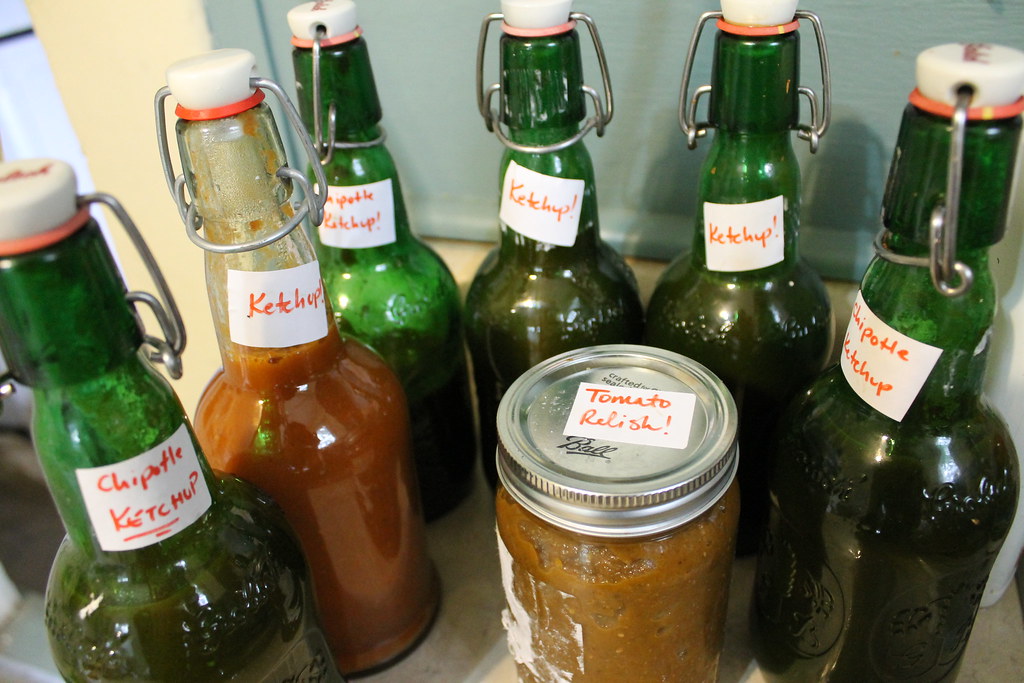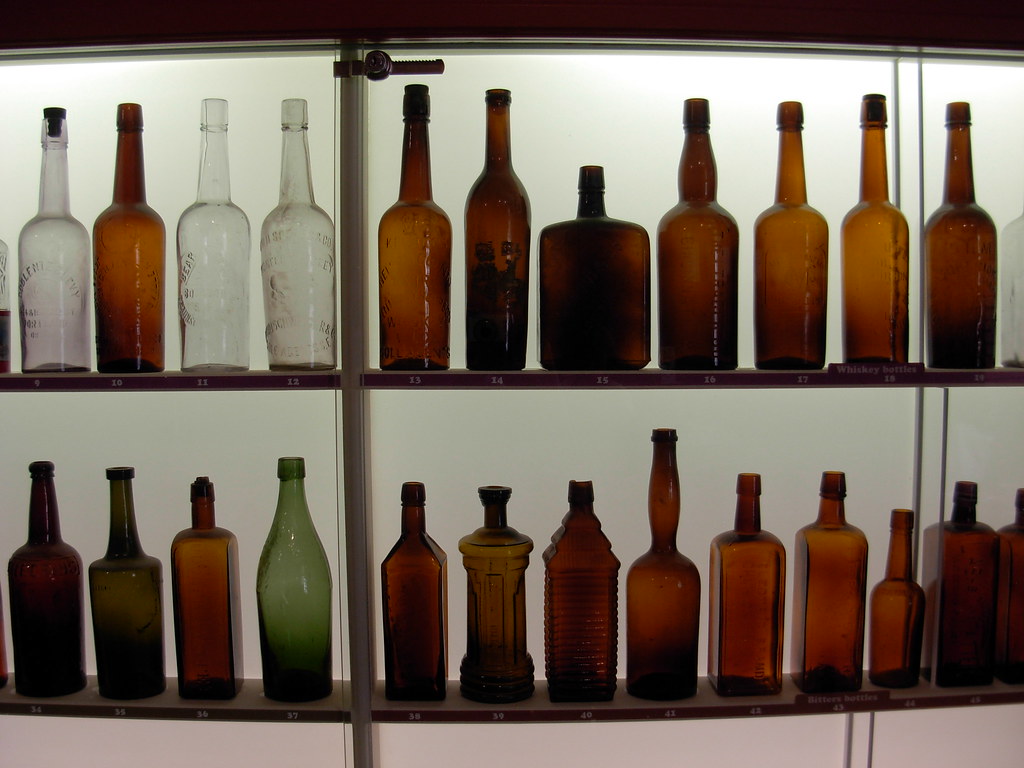Bottling your own kombucha can be a rewarding process, but you’ll need the right kind of bottles to do it. With the wrong bottles, you run the risk of the carbonation busting the glass.
The best kombucha bottles are made of food-grade glass that is thick enough to withstand the pressures of carbonation. Good bottling options to bottle kombucha at home are Grolsch bottles or recycled commercial kombucha bottles. Kombucha should not be bottled in capped beer bottles or Mason jars.
Making kombucha at home is fun, but you’ll need to pick the right bottles to render a successful result. Keep reading to learn more about kombucha bottles and the type you should buy or collect to bottle your kombucha.
What to Look for in Kombucha Bottles
When it comes to buying or collecting recycled bottles for kombucha, you’ll want to look for certain types of bottles to ensure that the kombucha doesn’t bust the container when it starts to ferment and build up pressure.
Here are some of the qualities you need to look for in a kombucha bottle:
- Food-grade glass: Two types of glass are generally regarded to be food-safe. These are soda-lime silicate glass and borosilicate glass. These glass types are considered safe for fermenting and storing kombucha. Glass is a preferred container for fermented foods since it is chemically inert and has no chance of interacting. (Source: Debra Lynn Dadd)
- Thick glass: Kombucha requires the thicker type of glass used for glass brewing containers. This thick glass is capable of sustaining the pressures generated by fermentation and carbonation without shattering. It’s important to prevent this from happening, as one glass shattering can also break others nearby in a chain effect.
- Airtight seal: Most bottles used for kombucha come with a rubber top. This prevents contaminants from entering the beverage while it ferments and allows the bottle to be hermetically sealed.
Kombucha brewers should be sure to source suitable kombucha bottles before they begin their fermenting operation. You don’t want to be caught trying to improvise with a container that isn’t strong enough to handle the job, or you’ll end up with a gigantic mess.
What to Avoid in Kombucha Bottles
Just as there are some qualities you should actively look for when you’re sourcing kombucha bottles, there are also some qualities that you want to avoid in kombucha bottles.
Here are a few qualities you should actively avoid when you’re sourcing kombucha bottles:
- Square shapes: Square-shaped containers have been found by brewers to be more likely to burst under the pressure of carbonation formed during the fermentation process. While this is anecdotal, it’s still a good idea to avoid these types of bottles if you can.
- Opaque materials: You should look for kombucha bottles made out of a material you can see through. This is one of the ways you’ll be able to check on the process of your kombucha fermentation without having to open the container and disturb the contents.
- Bottle caps: It’s possible to store kombucha in bottles like beer bottles that can be capped with a bottler, but it’s sometimes difficult to get an airtight seal this way. This can lead to the bottle leaking or the kombucha going flat.
- Bottles with small openings: With kombucha, you’ll want the opportunity to add fruits, vegetables, spices, and herbs to your fermentation. Bottles with small openings can make this process more tedious than it needs to be, so be sure to choose bottles with a wide mouth to make this part of kombucha brewing easier.
Plenty of bottles are suitable for fermenting kombucha, so avoid bottles with the qualities detailed in the list above if you don’t want a “kombucha bomb” going off in your fridge.
Good Choices for Kombucha Bottles
If you’re getting started fermenting your own kombucha, you might be moving into fermenting your own from buying it through a store. In that case, you may even have some empty kombucha bottles lying around. These bottles can be a great option if you’re just starting and don’t want to invest the money in buying some commercial brewing bottles.

Here are some excellent options if you’re wanting to buy fresh bottles for fermenting kombucha:
- Grolsch bottles: A Grolsch bottle is a sealing bottle with a rubber stopper that is commonly used by brewers who homebrew beer, but these bottles are also great for kombucha since they are meant to withstand the pressures of fermentation. These bottles can be a little expensive per bottle, but they are easy to clean and reuse once you’ve invested in a set.
- Wide-mouth twist cap bottles: These types of bottles aren’t quite as airtight as brewing bottles, but for people who like to add a bunch of extra flavors to their kombucha in the form of fruits, spices, or herbs, these bottles are a great option. They’re also great for packing along after fermentation is complete for an on-the-go beverage.
- Swing top glass bottles: These commercial swing top glass bottles are a fantastic option for fermenting kombucha. A significant advantage of these swing top glass bottles is that they can be found in a slightly larger size, which is useful for storing larger batches of kombucha and adding flavoring agents.
Unless you’re bottling kombucha for commercial sale or drinking a lot of it, you likely won’t need more than a few bottles to keep enough for personal use. It’s wise to buy slightly more expensive bottles that are less likely to break. They pay for themselves by helping you avoid having to clean fermented kombucha out of the entire interior of your fridge.
Bad Choices for Kombucha Bottles
Recycling old kombucha bottles for fermenting new batches is smart if you want to avoid having to buy them new, but there are also some types of bottles that aren’t a good choice for fermenting kombucha. These are usually bottles that either can’t keep a tight enough seal to allow carbonation to build up, or they are too weak to sustain the pressures of fermentation.
Here are some bad bottle choices to avoid when choosing recycled bottles for kombucha (Source: Karma Culture):
- Mason jars
- Recycled beer bottles
- Milk bottles
If you want to recycle bottles for kombucha, it’s better to recycle bottles that commercial kombucha was already stored in. That way, you know that the bottle can hold the kombucha without shattering.
Thinner bottles such as the ones above can be used if you’re desperate, but they are much more likely to either break a seal (causing the kombucha to be flat) or break under the pressures of the kombucha fermenting inside it.
How to Recycle Kombucha Bottles
If you like to buy commercial kombucha and make your own, you might end up with more kombucha bottles than you know what to do with. These are a few ways you can reuse your kombucha bottles in other ways after you’re done using them to store kombucha (Source: Brew Dr. Kombucha):
- Upcycle them into flower vases
- Turn them into fairy light lamps
- Make them into hummingbird feeders
So, if you’ve managed to collect more kombucha bottles than you can use for your kombucha, there are still plenty of other ways to use this aesthetically pleasing glass.
Bottling Your Kombucha is Easy with the Right Supplies
It’s easy for people who love to drink store-bought kombucha to fall into the art of making their own, but it’s essential to have the right supplies, so you end up with a good result in the end. Brewing bottles and recycled kombucha bottles are the best containers if you want to jump into making your own kombucha from home.
“Old Glass Bottles” by chareen.snelson is licensed under CC BY-NC-SA 2.0; “Homemade Ketchup in Grolsch bottles” by DanaK~WaterPenny is licensed under CC BY 2.0

